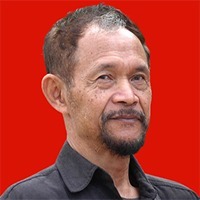Year Zero
Tuesday, September 22, 2020
arsip tempo : 171402964866.

THE Cambodians called it chhnam saun, ‘Year 0’. Zero: the gaping digit, the sign of non-existence but also the beginning when the Khmer Rouge regime tried to brutally wipe Cambodia’s past and to eliminate all traces of it. From 1975-1979, the time of The Killing Fields—a million people were killed in the name of communism and the future. The figure ‘0’ signified the end and the radical beginning. History w
...
Subscribe to continue reading.
We craft news with stories.
 For the benefits of subscribing to Digital Tempo, See More
For the benefits of subscribing to Digital Tempo, See More








